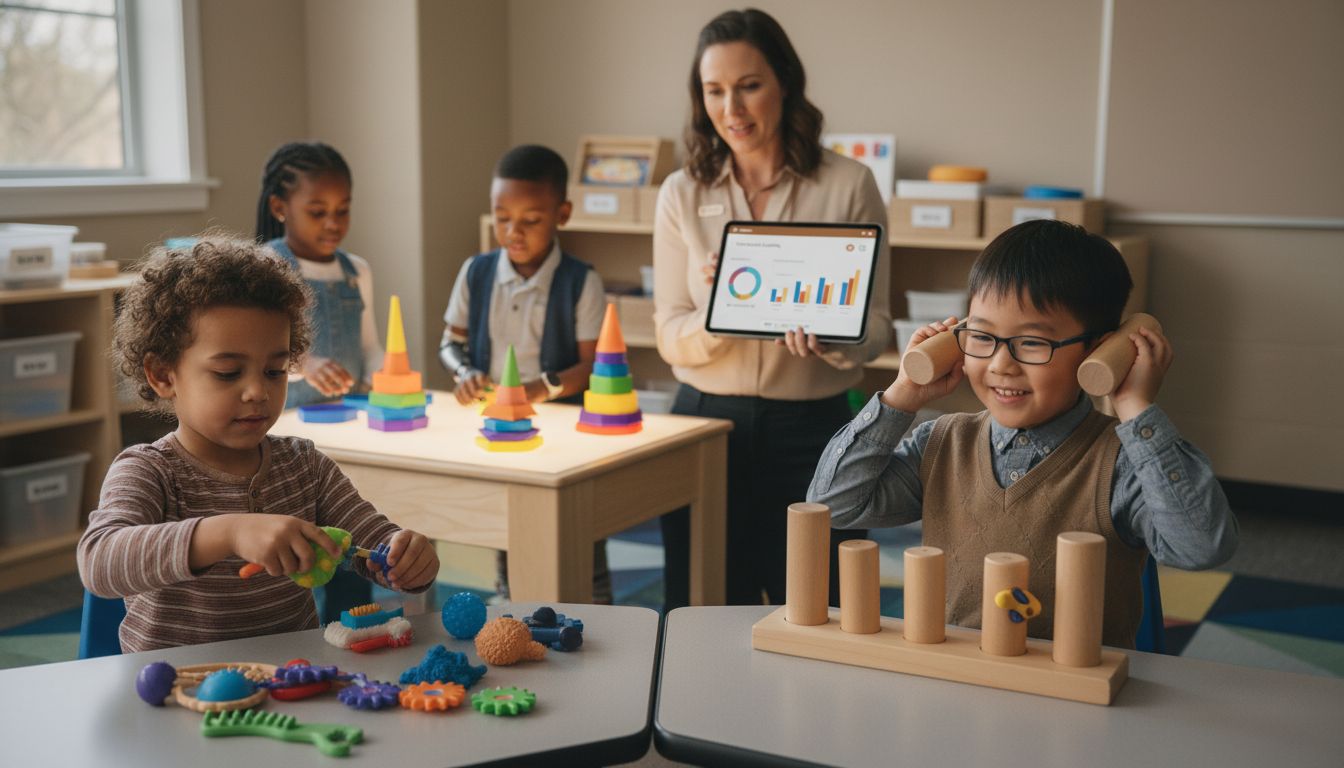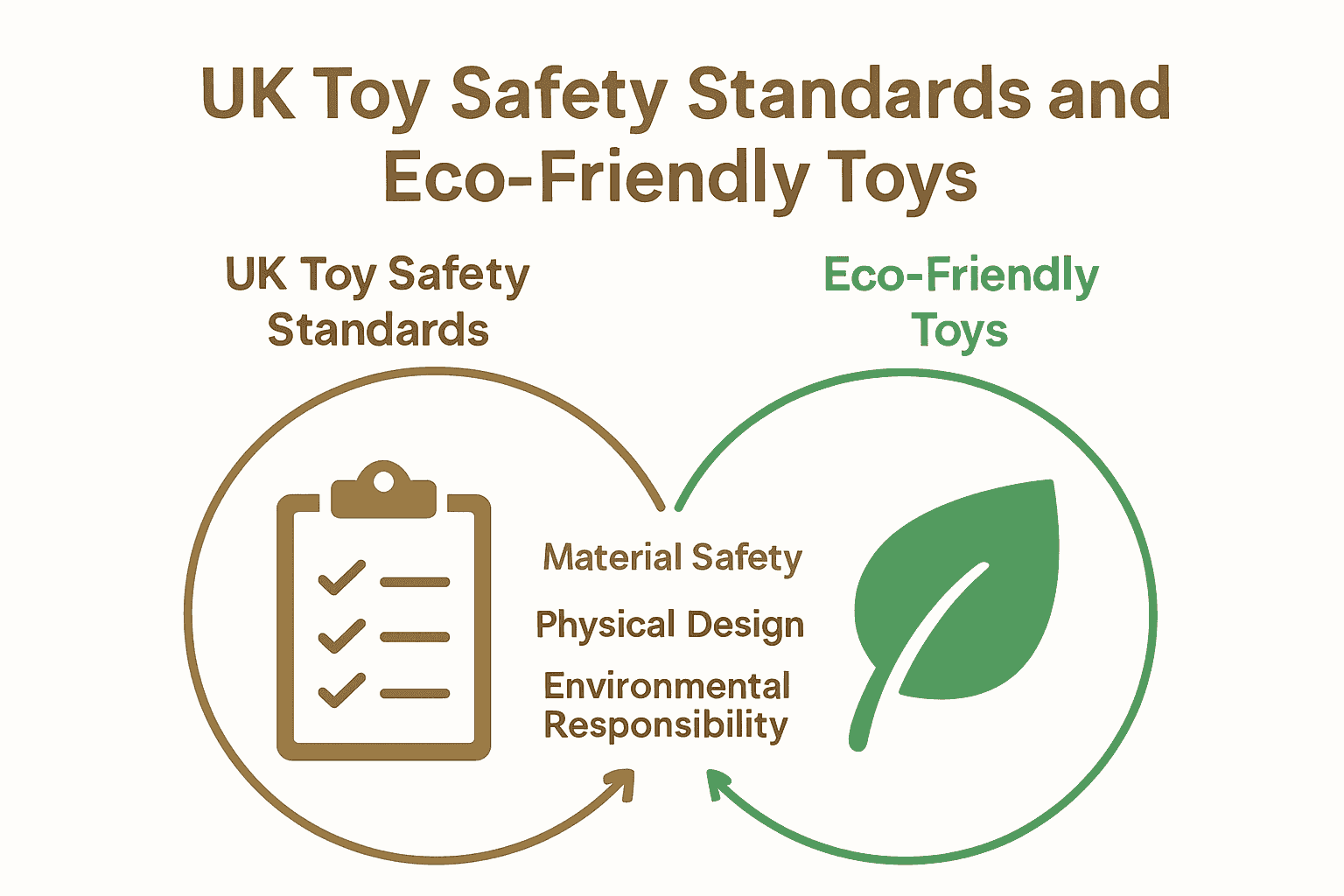Did you know that children spend nearly 16,000 hours playing before they turn six? Playtime is not just fun but a powerful way for kids to build skills that last a lifetime. Parents often look for more than simple entertainment when choosing toys. The right learning toys nurture curiosity and imagination while supporting healthy growth in every stage of childhood, making every moment of playtime count.
Table of Contents
- Defining Learning Toys And Their Purpose
- Major Types Of Educational And Sensory Toys
- Developmental Benefits Across Childhood Stages
- UK Safety Standards And Eco-Friendly Choices
- Gifting Tips: Choosing The Right Toy For Every Child
Key Takeaways
| Point | Details |
|---|---|
| Developmental Role of Learning Toys | Learning toys go beyond entertainment by fostering cognitive, social, and emotional growth in children. They are crucial for skill development across various childhood stages. |
| Types of Sensory Toys | Different sensory toys target specific developmental skills, such as visual, tactile, and auditory, enhancing children’s learning experiences. |
| Safety and Eco-Friendly Considerations | Parents should prioritize toys that meet UK safety standards, ensuring non-toxic materials and sustainable production practices for children’s safety and environmental responsibility. |
| Choosing the Right Toy | Selecting age-appropriate and interest-aligned toys promotes engagement and developmental growth, making thoughtful gifting essential in nurturing a child’s learning journey. |
Defining Learning Toys and Their Purpose
Learning toys are far more than simple playthings - they are powerful developmental tools designed to engage children’s minds, bodies, and imaginations. According to bura, toys are “objects, tools, or playthings that individuals can play with” which go beyond mere entertainment by encouraging cognitive learning, social development, and skill enhancement.
These specialized toys serve multiple critical purposes in childhood growth. macfea highlights that learning toys “stimulate children’s mental, emotional, and psychological development” while helping them explore their environment and understand complex social dynamics. They effectively support children in:

- Mimicking adult roles
- Developing problem-solving skills
- Enhancing motor coordination
- Encouraging creative thinking
- Building foundational learning experiences
Understanding the broader purpose of learning toys is crucial for parents seeking meaningful play experiences. By selecting intentional, developmentally appropriate toys, you create opportunities for guided learning that feel like pure fun. Explore our understanding why educational toys matter guide to dive deeper into this fascinating world of purposeful play.
Major Types of Educational and Sensory Toys
Children’s development can be significantly enhanced through carefully selected educational and sensory toys that engage multiple aspects of learning. Spacekraft highlights the importance of diverse sensory tools, identifying interactive products designed to support different developmental needs.
Sensory toys can be categorised into several key types that target specific developmental skills:
Here’s an overview of key types of sensory toys and the skills they develop:
| Type of Sensory Toy | Examples | Targeted Developmental Skills |
|---|---|---|
| Visual Sensory Toys | Interactive bubble tubes Colour-changing lights |
Visual perception Focus Calming |
| Tactile Sensory Toys | Weighted hedgehogs Fidget tools |
Fine motor skills Texture awareness |
| Auditory Development Toys | Sound exploration instruments Musical toys |
Listening skills Sound differentiation |
- Visual Sensory Toys
- Interactive bubble tubes
- Visual effects sensory bags
- Colour-changing light toys
- Projection and reflection items
- Tactile Sensory Toys
- Weighted hedgehogs
- Textured manipulation objects
- Stress and fidget tools
- Soft and varied texture play items
- Auditory Development Toys
- Sound exploration instruments
- Ear defenders for sensitive children
- Musical interactive toys
- Sound matching games
For parents seeking comprehensive insights into selecting the right developmental toys, check out our 6 types of educational toys guide which provides deeper exploration of age-appropriate learning tools that make playtime both fun and educational.
Developmental Benefits Across Childhood Stages
Learning toys play a crucial role in supporting children’s holistic development across different stages of childhood. According to bura, playing with toys allows children to develop key skills and experiences that enhance their physical, linguistic, social, emotional, and cognitive growth.
Macfea further emphasises that through purposeful play, children achieve critical developmental milestones by:
- Problem-solving skills
- Sharing and communication
- Emotional expression
- Self-understanding
- Social interaction
Developmental benefits vary significantly across different childhood stages:
Infant Stage (0-1 years)
- Sensory exploration
- Motor skill development
- Basic cause-and-effect understanding
Toddler Stage (1-3 years)
- Language acquisition
- Basic cognitive skills
- Imaginative play initiation
Preschool Stage (3-5 years)
- Advanced problem-solving
- Social interaction skills
- Complex imaginative scenarios
For parents looking to understand the nuanced developmental journey, our 7 best learning toys for toddlers guide offers comprehensive insights into age-appropriate developmental support through play.
UK Safety Standards and Eco-Friendly Choices
Parents today are increasingly concerned about the safety and environmental impact of children’s toys. En highlights the growing trend of eco-conscious toy manufacturing, with companies like Escor Toys pioneering the use of FSC-certified wood in toy production, demonstrating a commitment to sustainable materials.
UK toy safety standards are rigorous, ensuring children’s protection across multiple dimensions:
- Material Safety
- Non-toxic paint and finishes
- Chemical-free components
- Hypoallergenic materials
- Physical Design
- No sharp edges
- Appropriate size to prevent choking
- Durability testing
- Age-appropriate design
- Environmental Considerations
- Sustainable sourcing
- Recyclable packaging
- Reduced carbon footprint
- Minimal plastic usage
Interestingly, En notes that long-standing UK toy brands like Stickle Bricks have maintained a focus on safety and durability since 1969, showcasing the nation’s long-standing commitment to quality children’s products.

For parents seeking sustainable options, our why choose wooden toys guide provides comprehensive insights into selecting eco-friendly, safe play experiences that support both child development and environmental responsibility.
Gifting Tips: Choosing the Right Toy for Every Child
Selecting the perfect educational toy requires thoughtful consideration of a child’s individual developmental stage and unique interests. ELC emphasises the importance of sensory exploration, recommending toys that help children experience the world through sight, sound, and touch.
Key considerations when choosing the right toy include:
- Age Appropriateness
- Matches current developmental stage
- Challenges without overwhelming
- Safe complexity level
- Individual Interests
- Aligns with child’s current passions
- Encourages natural curiosity
- Motivates independent play
- Learning Potential
- Promotes skill development
- Offers multiple play scenarios
- Supports cognitive growth
Sensory Wise highlights the significance of selecting high-quality products designed to provide lasting educational value. Professional gift givers understand that the best toys are those that grow with the child, offering evolving challenges and engagement.
For parents seeking expert guidance, our how to gift educational toys guide provides comprehensive insights into selecting meaningful, developmentally appropriate presents that spark joy and learning.
Discover the Perfect Learning Toy That Truly Delights and Develops
Choosing the right learning toy can feel overwhelming with so many options, but the challenge parents face is clear: how to find meaningful, developmentally appropriate toys that inspire imagination and support sensory growth. This article highlights the importance of educational gifts that nurture problem-solving skills, sensory exploration, and social development. At Learning Bugs, we understand that you want more than just a toy – you want an engaging experience that grows with your child and sparks joyful discovery.

Explore our carefully curated collection of wooden toys, role play sets, and educational kits designed to meet diverse developmental needs and suit every stage of childhood. From sensory-rich products to imaginative play essentials, find lasting quality and timeless appeal all in one place. Visit Learning Bugs today and embrace purposeful play that makes gift-giving rewarding and hassle free. Your child’s journey to joyful, meaningful learning starts here.
Frequently Asked Questions
What are learning toys and how do they benefit child development?
Learning toys are specially designed playthings that go beyond mere entertainment. They support cognitive learning, social development, and skill enhancement by stimulating children’s mental, emotional, and psychological growth.
What types of educational and sensory toys should I consider for different developmental stages?
There are various types of educational and sensory toys suitable for different stages: Visual sensory toys are great for visual perception; tactile toys enhance fine motor skills; and auditory toys promote listening skills. Selecting age-appropriate toys is crucial for effective learning.
How do I choose the right learning toy based on my child’s interests?
Consider your child’s current passions along with their developmental stage. Look for toys that encourage natural curiosity and promote skill development while providing multiple play scenarios to keep them engaged.
What safety standards should I look for when purchasing learning toys?
Look for toys that meet rigorous safety standards in terms of material safety, physical design (such as no sharp edges and choking hazard awareness), and environmental considerations, including sustainable sourcing and non-toxic components.

0 comments